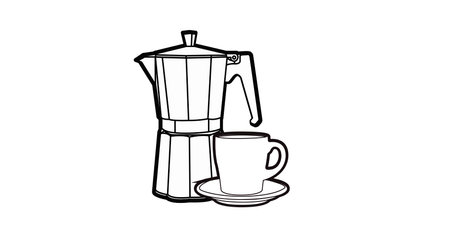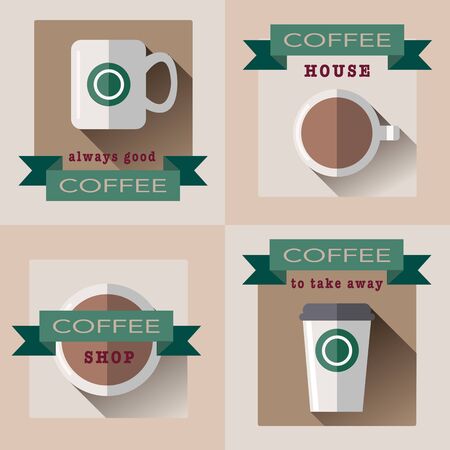Welcome to the UK Coffee Scene
If you thought British culture was all about a spot of tea, think again. In recent years, the UK has brewed up a vibrant coffee scene that rivals any European neighbour. From bustling high streets to independent cafés tucked away in cobbled alleys, the nation’s love affair with coffee is undeniable. What sets the UK apart, however, isn’t just its espresso shots or flat whites—it’s the uniquely British way people talk about their daily brew. Over time, coffee language in the UK has evolved into a playful and practical blend of local slang, reflecting both the diverse influences of global coffee trends and the British knack for witty wordplay. Slang isn’t just a linguistic quirk here; it’s an essential part of ordering, chatting, and connecting over coffee. In this article, we’ll dive into some iconic UK coffee slang terms, decode what they really mean, and explore why these expressions are so integral to the British coffee experience.
2. Flat White and Beyond: Essential UK Coffee Orders
When you stroll into a British café, the coffee menu might look familiar at first glance—but don’t be fooled. The UK has brewed its own twist on global favourites, blending Italian roots with homegrown quirks and a dash of local lingo. Here’s an overview of the most popular British coffee drinks and how their meanings—and sizes—differ from what you might expect in America or Italy.
| Coffee Drink | UK Interpretation | American Equivalent | Italian Equivalent |
|---|---|---|---|
| Flat White | Smooth microfoam milk over a double shot; stronger than a latte, less frothy than a cappuccino. | Sometimes available, often confused with latte. | N/A (originated in Australia/New Zealand, popularised in UK) |
| Americano | Espresso topped with hot water, served in a mug; not as large or watery as some US versions. | Larger cup, often more diluted. | Caffè Americano |
| Latte | Espresso with plenty of steamed milk and a light layer of foam; usually smaller than US versions. | Larger cup, extra milk, sometimes flavoured syrups by default. | Caffè Latte (served in glass in Italy) |
| Cappuccino | Equal thirds espresso, steamed milk, and foam; dusted with cocoa powder is common. | Heavier on the milk, larger size. | Cappuccino (served smaller in Italy) |
| Black Coffee | Either an Americano or simply filter coffee—clarify if you want one or the other! | Brewed drip coffee is standard black coffee. | N/A (espresso-based drinks preferred) |
| White Coffee | A regular filter or instant coffee with a splash of cold milk (not to be confused with flat white). | Creamer often used instead of cold milk. | N/A |
| Macchiato | Dollop of foam on top of espresso; less sweet and much smaller than American caramel macchiatos. | Tall, sweetened with syrup and lots of milk. | Caffè Macchiato (very short and strong) |
The UK’s approach to coffee is pragmatic yet full of character—a “flat white” here means business, while asking for a “white coffee” will get you something very different from the antipodean classic. Sizes are generally more restrained than their American cousins, and Italian terms are adapted rather than followed to the letter. Whether you’re after a robust pick-me-up or something mellow to linger over, knowing these subtle differences ensures your order will hit just the right note in any British café.

3. Espresso Yourself: Everyday Coffee Slang Decoded
If you’ve ever queued up in a bustling UK coffee shop, you’ve probably overheard some curious phrases being tossed around. British coffee culture has brewed up its own set of slang that might leave newcomers scratching their heads. Here, we’ll break down some of the most common terms you’ll encounter, explain what they really mean, and show how locals weave them into daily conversations.
Flat White
What it means: A smooth espresso-based drink with velvety steamed milk, smaller and stronger than a latte.
Example: “I’ll grab a flat white to go, cheers!”
Cuppa
What it means: While traditionally used for tea, “cuppa” is now cheekily adopted for any hot drink, including coffee.
Example: “Fancy a cuppa before we head out?”
Skinny
What it means: Used to request skimmed (low-fat) milk in your coffee.
Example: “Could I get a skinny cappuccino, please?”
Splash
What it means: Refers to just a small dash of milk added to your brew.
Example: “Just a splash of milk in my Americano, thanks.”
Builder’s Brew
What it means: Though mostly said about strong tea, it’s sometimes humorously applied to extra-strong filter coffee among friends or colleagues.
Example: “Make mine a builder’s—need something to wake me up!”
Biscuit Dunker
What it means: Refers to someone who loves dipping biscuits (cookies) into their coffee—a classic British habit.
Example: “He’s such a biscuit dunker; watch him demolish that pack with his mocha.”
Punters & Baristas: The Lingo Exchange
Coffee slang isn’t just fun—it’s part of the social glue binding punters (customers) and baristas together. Next time you order, try slipping in some local lingo—you’ll not only sound like a regular but might also spark a friendly chat with your barista. That’s truly espresso-ing yourself, the British way.
4. From Builder’s Brew to Milky Coff: Cross-Section of British Caffeine Habits
While the British are famously associated with tea, coffee culture has woven itself deeply into everyday life, bringing along its own vibrant set of slang and rituals. Across the UK, ordering a coffee isn’t just about picking a drink—it’s about expressing your background, profession, and sometimes even your mood. Each region and social group seems to have their signature style and lingo, revealing much about local lifestyles and work cultures.
The Everyday Essentials: Slang on the Job
In many workplaces, particularly on building sites or in offices up north, “Builder’s Brew” is a staple term. While often used for a strong cup of tea, it’s increasingly applied to coffee—a hearty mugful, usually instant, made with plenty of sugar and milk to keep you going through long shifts. In contrast, a “Milky Coff” is typically preferred by those wanting something gentler; think of it as the British cousin to the continental café au lait.
Regional Flavours: North vs South
| Region | Popular Coffee Slang | Cultural Context |
|---|---|---|
| London & South East | Flat White, Oat Latte, Piccolo | Trendy cafés, cosmopolitan influences, health-conscious orders |
| Northern England | Builder’s Brew (coffee), Strong Black, Cup o’ Joe | No-nonsense approach, community hubs like greasy spoons or staff rooms |
| Scotland | A Wee Coffee, Rocket Fuel | Social warmth (“wee” means little), love for robust flavours during cold weather |
| Wales & West Country | Coffee with a Splash (extra milk), Quick ‘Un | Pace of rural life; emphasis on quick pick-me-ups between farmwork or errands |
Coffee Breaks: A Ritual Beyond the Cup
Coffee breaks are more than just refuelling—they’re mini social events. In some offices it’s called “having a natter over a cuppa,” while elsewhere you might hear “fancy a brew?” It’s this ritual that bonds colleagues or friends across class and region. Even the choice of biscuit dunked alongside—be it a digestive or shortbread—can spark debate!
Ultimately, British coffee slang acts as shorthand for social identity. Whether you’re grabbing a “quick one before shift,” asking for a “milky coff,” or sticking to your “builder’s brew,” these expressions are more than linguistic quirks—they’re windows into how Britons live and work together.
5. Navigating the Queue: Coffee Shop Etiquette in the UK
If you’ve ever wandered into a bustling British café, you’ll know that “queuing” is more than just a line—it’s an institution. Navigating this unwritten choreography takes a bit of local know-how and a dash of slang fluency. Here’s how to blend in and order like you belong.
The Sacred Queue
First things first: respect the queue. Brits are famous for their orderly lines, and coffee shops are no exception. Don’t attempt to “jump the queue”—that’s a cardinal sin. Instead, find your place at the end and wait patiently, perhaps exchanging a polite nod or brief eye contact with fellow coffee seekers. If someone says, “You alright?” it’s not an invitation to spill your life story; it’s just a casual greeting.
Ordering with Local Lingo
When it’s your turn at the counter, keep things brisk but friendly. A simple “Could I get a flat white, please?” works wonders. If you’re feeling adventurous, try dropping some local slang: “One cuppa to go” (for a takeaway cup) or “a splash of milk” if you like it lighter. The term “builder’s brew” usually refers to strong tea, but occasionally someone will cheekily use it for their coffee—just be ready for banter from the barista.
Interacting with Baristas
British café culture values politeness and understatement. Don’t be surprised if your barista greets you with dry humour or calls out your order with a wry smile—“Here’s your rocket fuel!” means your espresso is strong enough to launch you into orbit. Always say “please” and “thank you,” and never forget the magic words: “Cheers!” as you collect your drink.
Table Manners and Takeaways
If you’re sitting in, choose your spot after ordering and avoid table-hogging during busy times. If you’re taking away, don’t linger near the till—give space for the next customer in line. And remember, returning your tray or cup is considered good form; leaving a mess is decidedly un-British.
The Social Side of Slang
Coffee shop banter is part of the experience. Terms like “cuppa,” “brew,” or even “beans on” (when they’re brewing fresh coffee) float around daily. Listen out for playful exchanges: “Same again?” from the barista means they remember your usual order—a subtle sign that you’re becoming a regular.
Mastering these customs and idioms helps unlock the true flavour of UK café culture. Whether you’re after a quick shot or settling in for a chinwag over lattes, understanding the local etiquette ensures you won’t stick out like a soggy biscuit.
6. Bloke’s Latte or Hipster’s Mocha? Decoding Stereotypes in UK Coffee Talk
When it comes to ordering coffee across the UK, your choice of brew can say as much about you as your accent or football allegiance. The bloke popping into a greasy spoon for a “builder’s brew” with extra milk and two sugars isn’t just after caffeine—he’s making a statement about keeping things straightforward, practical, and no-nonsense. Meanwhile, over in East London or Manchester’s Northern Quarter, the hipster might ask for an oat milk mocha with a dash of cinnamon, giving off an air of creativity and conscious consumption. These stereotypes, while playful, reflect how diverse British culture is—and how coffee has become another arena for expressing identity.
Across cities and countryside alike, there’s the “flat white crowd” who have adopted this Antipodean import as their badge of cosmopolitan cool. Contrast that with the “milky coffee mums” gathering after the school run for a frothy cappuccino and a chinwag. Then you’ve got the student clutching a black Americano, fuelled by deadlines rather than taste preference, and the pensioner who still calls an espresso “a tiny strong one.” Each order is more than just a drink; it’s shorthand for lifestyle, values, even politics at times.
But let’s not forget: these categories are fluid. The same person might be a latte loyalist during work hours but swap to a cheeky Irish coffee at the pub come Friday evening. What unites all Brits is the banter that surrounds coffee—the gentle teasing if your mate orders something “a bit fancy,” or the camaraderie built over shared rituals in local cafés. In decoding UK coffee slang and stereotypes, we see how everyday choices are woven into the fabric of British humour and identity—a reflection of both tradition and change.
7. Slang in the Wild: Real Chats from UK Coffee Spots
If you want to truly espresso yourself like a Brit, there’s no better way than listening in on how coffee slang is sprinkled into everyday chats. Here are a few mini-dialogues and snippets overheard (or imagined) in the bustling cafés of London, Manchester, and beyond. Each example highlights genuine UK coffee lingo at work.
Ordering Like a Local
Barista: “Morning! What’ll it be?”
Customer: “Could I grab a flat white, extra shot, and make it proper strong? Oh, and a cheeky pain au chocolat, please.”
Barista: “You got it—one builder’s strength coming up!”
Notice the “extra shot” and “proper strong”—classic requests for those who need that caffeine jolt. Throwing in “cheeky” before a pastry is pure British playfulness.
Coffee Catch-Up with Mates
Friend 1: “Fancy a brew? I’m gasping after that meeting.”
Friend 2: “Yeah, let’s nip round the corner. I’ll have my usual—a skinny latte with an extra pump of vanilla.”
Friend 1: “Living dangerously! I’ll just stick to my builder’s tea.”
Here, “brew” isn’t just for tea; it’s often used for coffee too. “Gasping” means really needing something (in this case, caffeine!), while the customisation of orders shows UK café culture’s flexibility.
Espresso Etiquette
Barista: “All right, whose is the cortado?”
Regular: “That’s me! Cheers, love. You know I can’t face the day without my morning rocket fuel.”
“Rocket fuel” is a playful way to describe a strong coffee—perfectly capturing the British tendency to combine humour and practicality.
Takeaway Truths
The next time you’re waiting in line at your local UK coffee shop, listen out for these phrases. They’re more than just words—they’re social glue and cultural shorthand. Learning this lingo doesn’t just help you order more efficiently; it makes you part of the coffee-loving community.


